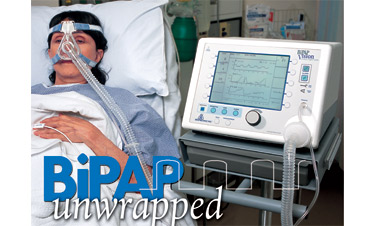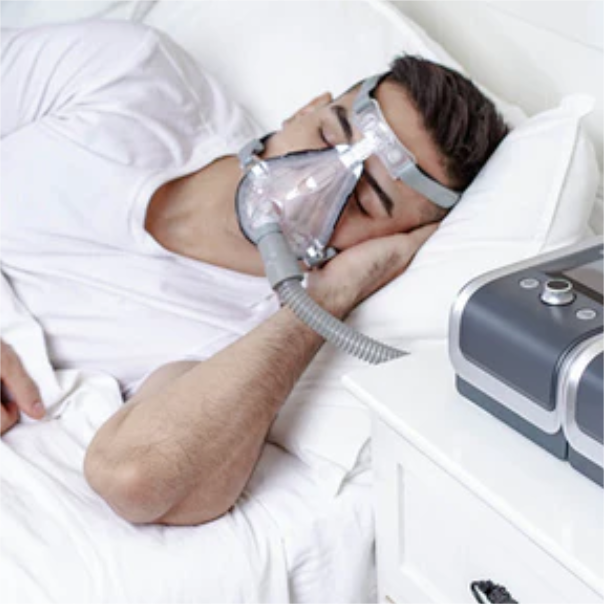Selecting the Right BiPAP Rental Package for Your Demands
Selecting the Right BiPAP Rental Package for Your Demands
Blog Article
Bipap vs. CPAP: Which Is the Ideal for Your Rest Disorder?
When browsing the complexities of sleep problems, the option in between BiPAP and CPAP treatment is a vital consideration. While CPAP gives a consistent airflow appropriate for obstructive sleep apnea, BiPAP's dual stress settings might improve comfort for those with even more intricate respiratory concerns.
Recognizing Sleep Disorders
Rest conditions encompass a variety of conditions that interrupt normal rest patterns, impacting both the top quality and period of rest. These problems can manifest in different forms, including sleep problems, sleep apnea, narcolepsy, troubled leg syndrome, and parasomnias. Each problem offers distinct obstacles, typically leading to considerable daytime tiredness, cognitive problems, and emotional disruptions.
Sleep problems is defined by trouble falling or staying asleep, while sleep apnea entails repeated disturbances in breathing throughout sleep, commonly leading to fragmented rest. Narcolepsy, on the various other hand, is noted by too much daytime sleepiness and abrupt sleep strikes. Restless leg syndrome creates unpleasant feelings in the legs, motivating an uncontrollable desire to move them, which can also hinder the ability to drop off to sleep.
The impact of rest conditions extends beyond individual health, affecting total productivity, partnerships, and high quality of life. Understanding the specific nature of each condition is important for reliable medical diagnosis and treatment. As rest health and wellness becomes progressively recognized as a crucial element of overall health, dealing with these problems is necessary for improving both sleep high quality and daily performance.
Exactly How CPAP Works
Constant Favorable Air Passage Stress (CPAP) treatment is regularly employed as a main therapy for obstructive sleep apnea (OSA) The device of CPAP involves using a maker that delivers a consistent stream of air with a mask put on during rest. This airflow maintains favorable pressure in the airway, protecting against the collapse or blockage of the throat that can take place throughout sleep.
When a client takes in, the CPAP equipment offers a continual circulation of air, guaranteeing that the airway continues to be open - BiPAP Rental. This not only minimizes the signs of OSA, such as snoring and disrupted rest patterns, but likewise minimizes the involved health threats, consisting of cardiovascular complications and daytime exhaustion
The pressure settings on a CPAP equipment can be tailored to fulfill specific client requirements, frequently established with a rest research study. People generally undergo titration researches to locate the optimum stress degree for their distinct condition. Routine follow-up and changes may be needed to ensure efficiency and comfort. In general, CPAP treatment has been revealed to considerably enhance the high quality of rest and general health and wellness for individuals struggling with obstructive sleep apnea.
Just How BiPAP Works
BiPAP, or Bilevel Positive Air Passage Pressure, is a customized form of non-invasive ventilation that is especially valuable for patients with conditions such as intricate rest apnea or breathing conditions. Unlike CPAP, which delivers a continuous stream of air at a single stress, BiPAP gives 2 distinctive stress settings: a greater inspiratory pressure for inhalation and a lower expiratory pressure for exhalation. This dual-pressure technique permits much easier breathing, decreasing the initiative called for during exhalation.
The tool runs via a mask fitted over the nose or mouth, linked to an equipment that creates atmospheric pressure. When the patient inhales, the device provides the higher stress to help with air movement, making sure that the respiratory tract remains open. Upon exhalation, the equipment immediately minimizes the stress, making it much more comfortable for the person to take a breath out.

Secret Differences Between BiPAP and CPAP

On the other Website hand, BiPAP (Bilevel Favorable Air passage Pressure) uses 2 different stress setups: one for inhalation and a reduced one for exhalation. This double pressure system enables even more comfy breathing, particularly for clients that have a hard time with breathing out versus a continuous pressure. BiPAP is commonly recommended for clients with complicated rest apnea, chronic obstructive lung condition (COPD), or those that require additional assistance throughout rest.
Furthermore, the complexity of BiPAP gadgets usually causes a higher expense and needs a lot more careful titration than CPAP. BiPAP Rental. Comprehending these crucial distinctions can assist in identifying which device may be preferable for certain rest conditions, establishing the groundwork for enlightened treatment choices
Picking the Right Treatment
Just how can one establish the most ideal treatment for handling sleep problems? The choice between BiPAP and CPAP therapy primarily rests on the specific characteristics of the rest condition, the individual's general health and wellness, and their comfort with the tool. CPAP, which delivers a continuous stream of air, is commonly suggested for obstructive rest apnea (OSA) It preserves an open air passage during sleep, properly protecting against apneas and hypopneas.
Alternatively, BiPAP supplies two degrees of pressure: one for inhalation and a lower one for exhalation. This twin pressure system is advantageous for people with complicated sleep apnea or those that experience difficulty breathing out against a continuous pressure. In addition, BiPAP is typically recommended for individuals with respiratory problems, such as persistent obstructive lung disease (COPD), where varying pressure setups can enhance convenience and conformity.
Inevitably, a complete assessment by a rest specialist, consisting of a sleep research, can help establish which therapy straightens finest with the client's requirements. Factors such as comfort, simplicity of usage, and specific medical problems must additionally be taken into account to enhance treatment end results.
Final Thought
In summary, both BiPAP and CPAP offer distinct objectives in the administration of see page rest problems. CPAP works for obstructive sleep apnea through consistent airflow, while BiPAP provides double stress settings that improve convenience for those with complicated rest apnea or respiratory system issues. The option in between these treatments must be assisted by specific needs and conditions, necessitating a detailed examination by a rest professional to ensure optimal treatment end results and boosted top quality of sleep.

In general, CPAP therapy has been shown to considerably boost the top quality of sleep and general wellness for people suffering from obstructive rest apnea.
BiPAP is usually recommended for clients with complicated rest apnea, persistent obstructive pulmonary illness (COPD), or those that call for added support during rest.
CPAP is effective for obstructive rest apnea with regular air flow, while BiPAP offers dual pressure setups that improve convenience for those with complex sleep apnea or breathing problems.
Report this page